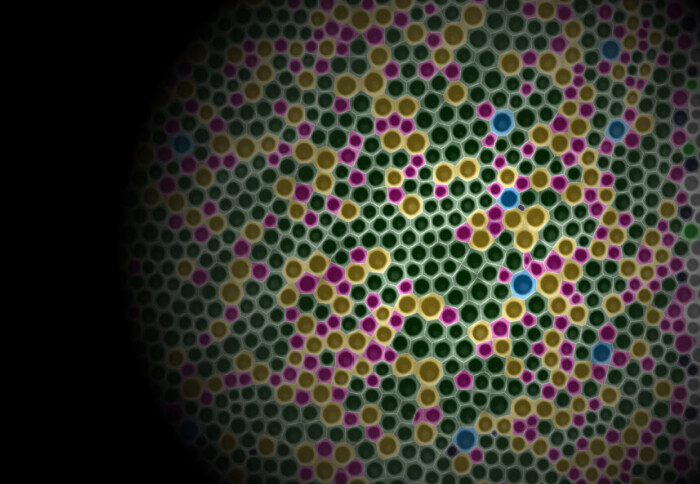Researchers discover a novel way to create porous polymer particle

Imperial College London researchers have discovered a new way to create porous polymer particles by mimicking the formation of morning dew.
The research uses levitation, exploiting the formation of “breath figures”. When solution droplets evaporate, they cool down – a phenomenon known as evaporative cooling - providing conditions for the condensation of water vapour on their surface as microdroplets. Simultaneously, drying of the droplets creates a skin that prevents these microdroplets from merging and, instead, these self-organise into crystal-like arrangements.
Rather than the exception, breath figure self-assembly was found to be `the rule' for sufficiently volatile droplets. As a result, they create spongy particles (reminiscent of a 'dalmatian' pattern or ‘Swiss cheese’, but where all dots or pores are nearly identical) with tuneable pore sizes and organisation, resulting in so-called regular Voronoi tessellations.
This new research, led by Professor João Cabral, Department of Chemical Engineering, entitled ‘Breath Figure Assembly on Evaporating Polymer Solution Droplets in Levitation’, has been published in Physical Review Letters on 22 November 2023.
Real-life impact
In addition to fascinating physics and engineering, the practical impact lies in the predictive design of polymer particles, for controlled release and targeted delivery applications of pharmaceuticals, enabling the dialling of dissolution profiles of the same ingredients via particle structure alone, and potentially relevant to a range of powder materials used in food, agrichemical and coatings industries.
We show that these prescriptive ‘Goldilocks’ conditions become the norm in our process. João Cabral Professor, Department of Chemical Engineering
As Professor João Cabral states: "Perhaps the most surprising aspect of this work is that, while one needs to work hard to generate breath figure assembly in planar films, these happen readily in droplets due to their thermal insulation and high evaporation rates. We show that these prescriptive ‘Goldilocks’ conditions become the norm in our process".
The research was published by the American Physical Society, supported by the Engineering and Physical Sciences Research Council (EPSRC), Procter & Gamble, the Royal Society and the Royal Academy of Engineering for funding.
Article text (excluding photos or graphics) © Imperial College London.
Photos and graphics subject to third party copyright used with permission or © Imperial College London.
Reporter
Navta Hussain
Department of Chemical Engineering